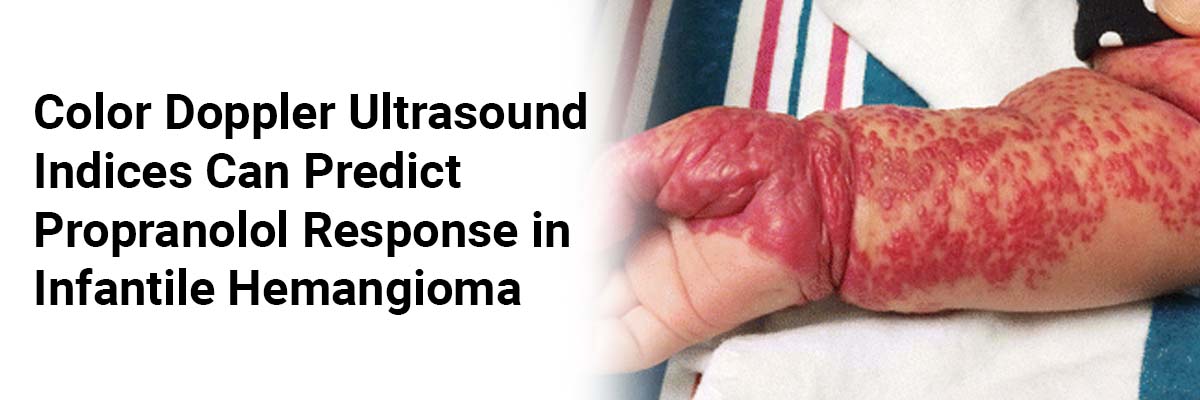
 IJCP Editorial Team
IJCP Editorial Team
Color Doppler Ultrasound Indices Can Predict Propranolol Response in Infantile Hemangioma
A new study assessed the effectiveness of color Doppler ultrasonography
in evaluating the response of infantile hemangioma to oral propranolol
treatment.
This prospective study was conducted between 2016 and 2022 and involved
children with symptomatic infantile hemangioma – who received outpatient
therapy with oral propranolol at a dose of 2 mg/kg per day in three divided
doses. Response to treatment was evaluated three months after starting
treatment (intermediate clinical response) and three months after completing
treatment (final clinical response, FCR). The primary outcome measures included
clinical and radiological responses (assessed through resistivity index (RI),
pulsatility index (PI), and peak systolic velocity). Secondary outcomes
included treatment-related complications.
Out of 601 patients initially treated with propranolol, 99 were excluded
due to severe adverse effects. Among the remaining 502 participants, 64.3%
showed an excellent response at FCR; 17.7% showed partial response; and 17.9%
were non-responders. Doppler USG indices, particularly RI and PI, exhibited
predictive value in identifying responders at three months, with increases
greater than certain thresholds correlating with excellent response.
The results underscore the utility of color Doppler ultrasonography in guiding treatment decisions for infantile hemangioma, potentially preventing unnecessary exposure to propranolol in non-responders and facilitating timely consideration of alternative therapies. Doppler USG indices – RI and PI, can predict the response to propranolol in children with infantile hemangioma at three months. This insight could potentially prevent unnecessary exposure to propranolol in non-responding patients and allowing for a timely shift toward alternative therapies.
Source: Pandey V, Bera RN, Diwedi AN, Singh OP, Tiwari P. Indian Pediatrics.
2024 Mar 1;61(3):237-42.

IJCP Editorial Team
Comprising seasoned professionals and experts from the medical field, the IJCP editorial team is dedicated to delivering timely and accurate content and thriving to provide attention-grabbing information for the readers. What sets them apart are their diverse expertise, spanning academia, research, and clinical practice, and their dedication to upholding the highest standards of quality and integrity. With a wealth of experience and a commitment to excellence, the IJCP editorial team strives to provide valuable perspectives, the latest trends, and in-depth analyses across various medical domains, all in a way that keeps you interested and engaged.




















Please login to comment on this article